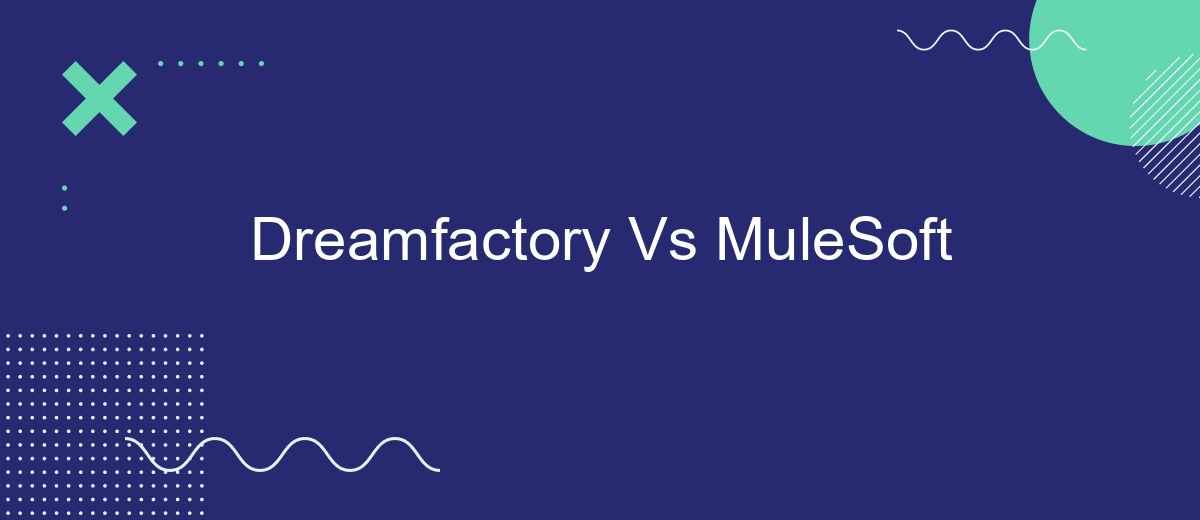In the rapidly evolving landscape of API management and integration, choosing the right platform can significantly impact your business operations. This article delves into a detailed comparison between Dreamfactory and MuleSoft, two leading solutions in the industry. By examining their features, capabilities, and use cases, we aim to provide insights that will help you make an informed decision tailored to your specific needs.
Introduction
In today's fast-paced digital landscape, businesses are increasingly relying on integration platforms to streamline their operations and enhance productivity. Two prominent players in this domain are Dreamfactory and MuleSoft, each offering unique capabilities to meet diverse integration needs.
- Dreamfactory: Known for its ease of use and rapid API generation capabilities.
- MuleSoft: Renowned for its robust features and extensive connectivity options.
Choosing the right integration platform is crucial for optimizing workflows and ensuring seamless data exchange between disparate systems. While Dreamfactory excels in simplifying API management, MuleSoft provides a comprehensive suite of tools for complex integration scenarios. Additionally, services like SaveMyLeads can further streamline the process by offering automated lead integration solutions, making it easier for businesses to connect various applications without extensive coding.
Dreamfactory Overview

DreamFactory is an open-source REST API backend that provides developers with a powerful platform to quickly create, manage, and deploy APIs. It simplifies the process of connecting to a wide variety of databases and services, allowing users to generate APIs effortlessly. With DreamFactory, developers can achieve seamless integration between different systems and applications, significantly reducing the time and effort required for backend development. Its intuitive interface and extensive documentation make it accessible for both novice and experienced developers.
One of the standout features of DreamFactory is its ability to automatically generate APIs for various data sources, including SQL, NoSQL, and file storage systems. This eliminates the need for manual coding and ensures that APIs are consistently secure and well-documented. Additionally, DreamFactory supports a wide range of authentication methods and provides robust role-based access control, ensuring that data is protected at all times. For those looking to streamline their integration processes further, tools like SaveMyLeads can be used in conjunction with DreamFactory to automate lead data transfers and enhance overall workflow efficiency.
MuleSoft Overview

MuleSoft is a leading integration platform that enables businesses to connect applications, data, and devices seamlessly. By providing a unified solution for API management and integration, MuleSoft helps organizations streamline their operations and enhance their digital transformation efforts. The platform is known for its flexibility and scalability, making it suitable for enterprises of all sizes.
- Comprehensive API Management: MuleSoft offers robust tools for designing, building, and managing APIs, ensuring secure and efficient data exchange.
- Integration Capabilities: MuleSoft supports a wide range of integration scenarios, from on-premises to cloud-based systems, enabling seamless data flow across different environments.
- Pre-built Connectors: The platform includes numerous pre-built connectors for popular applications and services, reducing the time and effort required to set up integrations.
- SaveMyLeads Integration: For businesses looking to automate lead management, MuleSoft can be integrated with SaveMyLeads, a service that streamlines the process of capturing and processing leads from various sources.
Overall, MuleSoft stands out as a versatile and powerful integration platform that addresses the diverse needs of modern businesses. Its comprehensive features and extensive connector library make it easier for organizations to achieve seamless integration and drive innovation.
Comparison

When comparing Dreamfactory and MuleSoft, it's essential to consider their core functionalities and how they cater to different integration needs. Dreamfactory is known for its ability to automatically generate APIs from various data sources, making it a go-to solution for developers looking for rapid API creation. On the other hand, MuleSoft offers a more comprehensive integration platform that connects applications, data, and devices with its powerful Anypoint Platform.
Both platforms have their unique strengths. Dreamfactory excels in ease of use and quick deployment, while MuleSoft provides extensive integration capabilities and robust enterprise features. The choice between the two largely depends on the specific requirements of the project and the level of complexity involved.
- Dreamfactory: Rapid API creation, ease of use, quick deployment.
- MuleSoft: Comprehensive integration, enterprise-grade features, extensive connectivity.
For businesses looking to automate their workflows and streamline integrations, services like SaveMyLeads can complement both Dreamfactory and MuleSoft. SaveMyLeads offers pre-built integrations that simplify connecting various applications, making it easier to manage data flows and automate tasks without extensive coding. Ultimately, the decision should align with the organization's integration needs and resource availability.
Conclusion
In conclusion, both Dreamfactory and MuleSoft offer robust solutions for API management and integration. Dreamfactory stands out for its ease of use and rapid deployment capabilities, making it an excellent choice for smaller teams or projects that require quick turnaround times. On the other hand, MuleSoft provides a more comprehensive suite of tools designed for complex, enterprise-level integrations, offering extensive customization and scalability options.
When choosing between these two platforms, it's essential to consider the specific needs of your project and your team's expertise. Additionally, services like SaveMyLeads can further streamline the integration process by automating data transfers between various applications, enhancing the overall efficiency of your operations. Ultimately, the best choice will depend on your organization's unique requirements and long-term goals.


FAQ
What are the main differences between Dreamfactory and MuleSoft?
Which platform is more suitable for small to medium-sized businesses?
Can both Dreamfactory and MuleSoft be used for real-time data integration?
What are the typical use cases for Dreamfactory?
Are there services available to help implement and configure these platforms?
Would you like your employees to receive real-time data on new Facebook leads, and automatically send a welcome email or SMS to users who have responded to your social media ad? All this and more can be implemented using the SaveMyLeads system. Connect the necessary services to your Facebook advertising account and automate data transfer and routine work. Let your employees focus on what really matters, rather than wasting time manually transferring data or sending out template emails.
